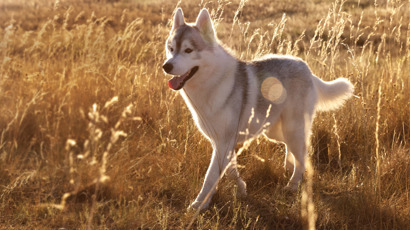Can you teach an old dog new tricks?

Dog training for adult dogs
Spending more time at home has resulted in a much higher adoption rate of adult dogs. In fact, many people have taken advantage of the lockdown to acquire a new dog, as they can spend a lot more time with their dog during the settling in phase.
So, how do you ensure that your new adult dog becomes a well-mannered member of your family?
Here are some important pieces of advice that can help you and your dog get off to a great start in your home.
Keep it positive
From the moment your new dog arrives in your home, it is important to ensure that your dog has positive experiences.
Reward for the behaviours you like e.g. relaxing, sitting on a mat while inside and try to ignore the behaviours you do not want e.g. jumping up on you.
Before any interaction with your dog, ask your dog to sit using both a voice command ‘sit’ as well as a consistent hand movement at the same time. Soon your dog will learn the hand cue without the need to say anything. Then reward your dog with a healthy treat and praise.
Punishment for perceived ‘bad’ behaviour can be detrimental for dogs, particularly if they have not yet learnt what they are allowed to do within your home. Punishment can lead to anxiety and even worse, fear-induced aggression, so avoid at all costs.
In their previous home, your adult dog may not have had opportunities to be taught not to jump up or tug on a leash when walked, so it is important not to expect too much too quickly and be realistic, patient and kind in your approach.
Try to stick to a routine
We might be stuck at home for the majority of time at the moment, but it is important to create a routine for your dog that can be continued when you return to your usual activities. Choose a time to walk your dog every day (or twice for active breeds) and stick to around the same time. Be mindful that changing routines in this current climate can cause stress to your dog. Check out this article to help reduce anxiety in your dog as the COVID-19 isolation restrictions ease.
In general, having a predictable routine for feeding, exercise and play is preferred for dogs. You will find that after a while, your dog knows when it is almost walk time or meal time and having these in place early will help set your dog up for success when it is time to return to normal.
Check out some quality training resources
There are many brilliant video resources available to download – someof my favourites that incorporate positive training techniques are Dr Ian Dunbar’s videos “Training dogs with Dunbar” as well as “SIRIUS adult dog training” which are both available to download from here, and are great resources for the whole family to learn from.
To look for a reputable trainer, I encourage dog owners to go to the Association of Pet Dog Trainers website.
Remember, some dog trainers may use outdated techniques which involve punishment or talk about your dog trying to be ‘dominant’, an old theory which has since been disproven.
Learn how to read your dog’s body language
A wagging tail means the dog is happy, right? Not always. Movement of the tail simply means your dog is willing to communicate with you, but this may not be a happy emotion. If your dog is feeling uneasy, then body language may include
- Stiff body posture
- White part of the eyes is visible
- Licking lips
- Yawning
- Ears back or to the side
- Cowering
- Moving away
Know the difference between a problem behaviour or a behavioural problem
From time to time, I come across a frustrated owner who has a dog that seems impossible to train. It is important to recognise which problems are trainable, otherwise known as a problem behaviour (a behaviour that is normal that we don’t want to live with) or a behavioural problem, which can be a more serious problem.
If your dog has an underlying anxiety problem (either due to being born with an anxious personality, prior mistreatment or a bad experience) then your dog may not be in the right mindset to train. Extremely anxious dogs cannot learn easily, so it is important to seek a veterinary consultation if your dog does not seem to be responding to training, or has a significant behavioural problem.



